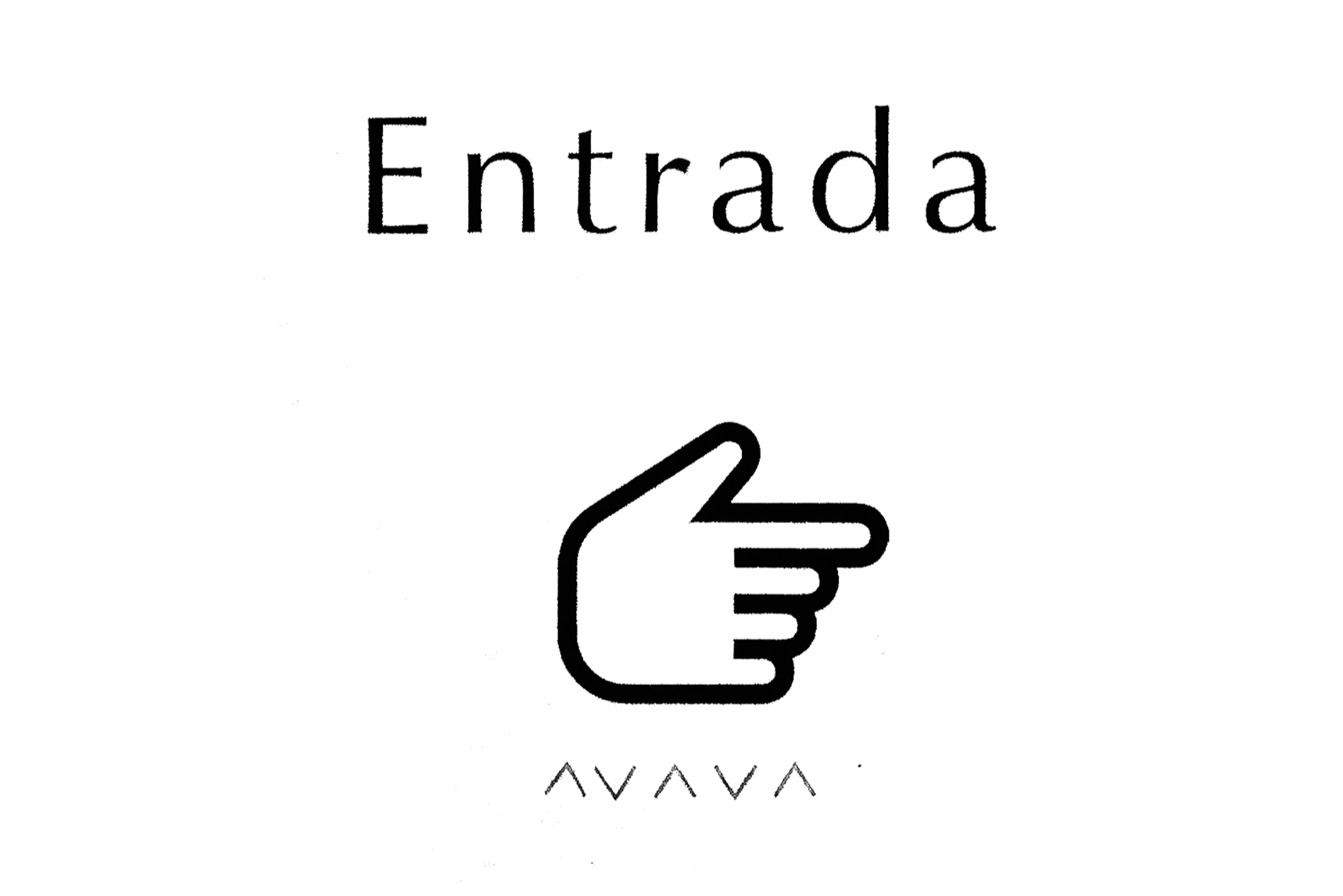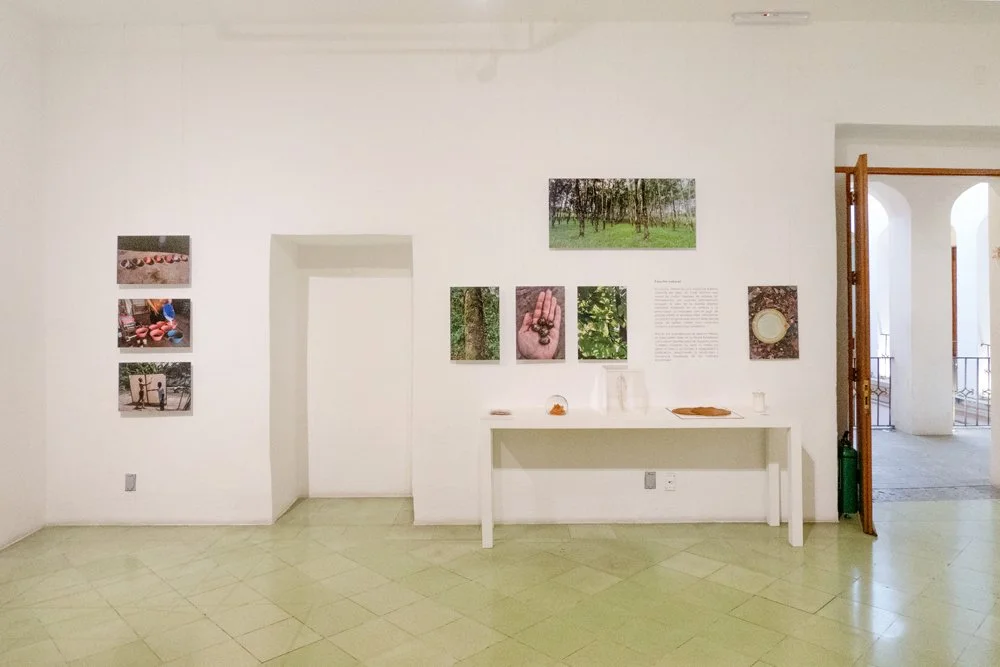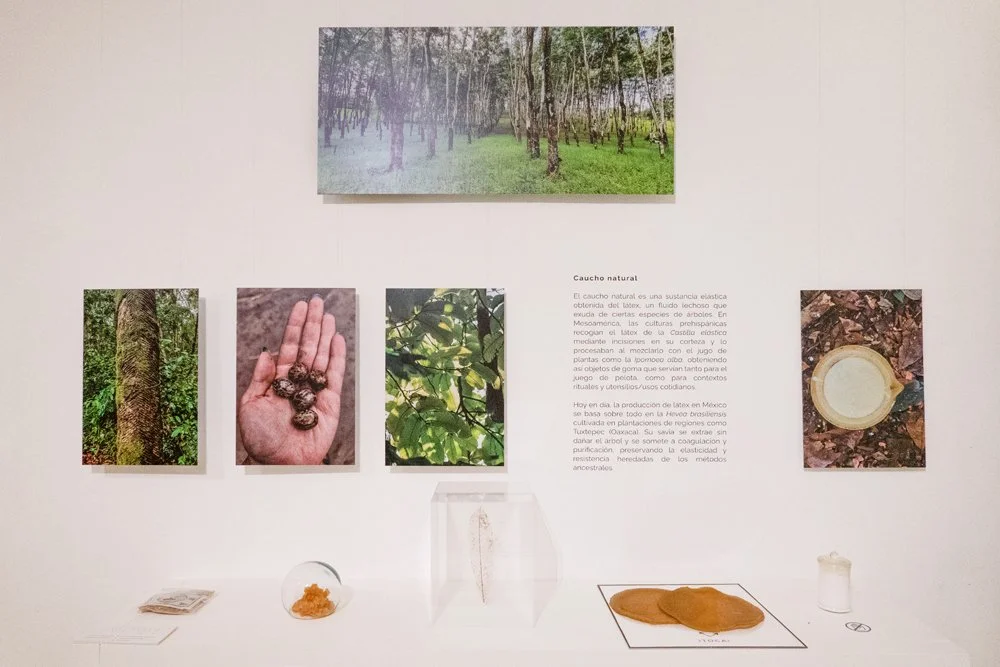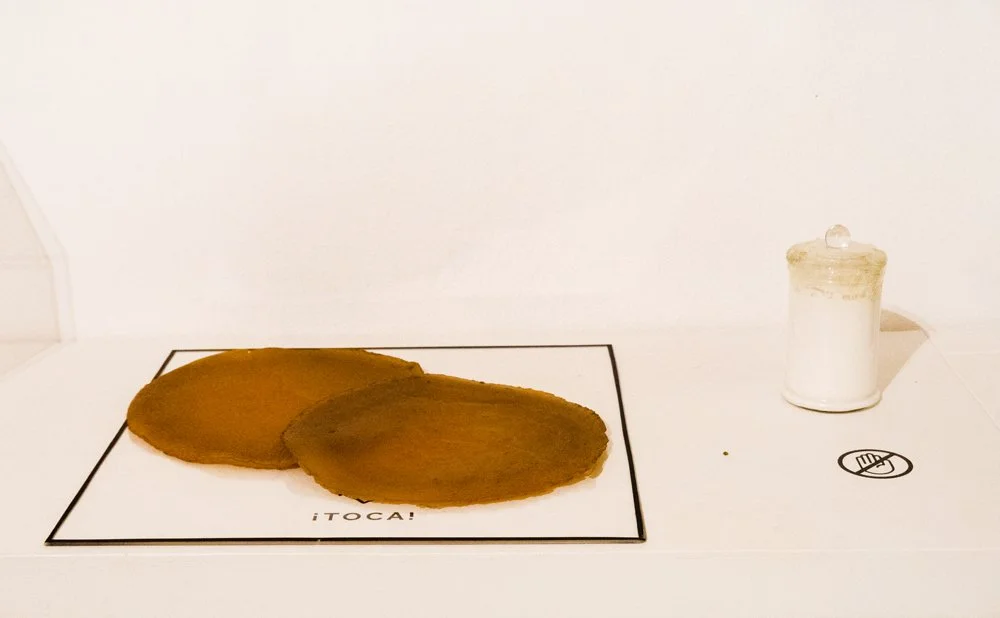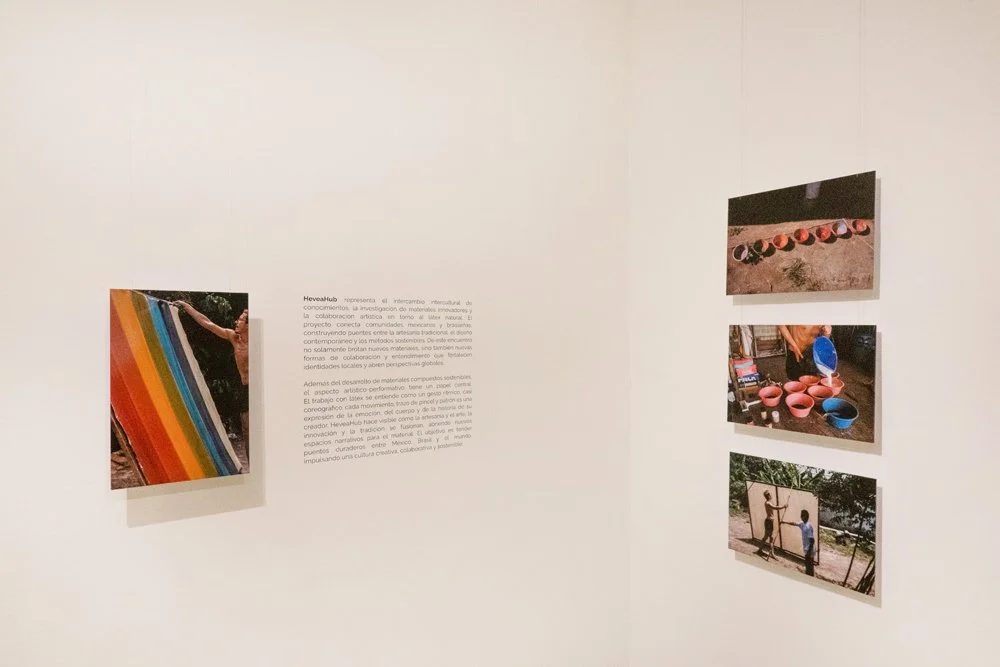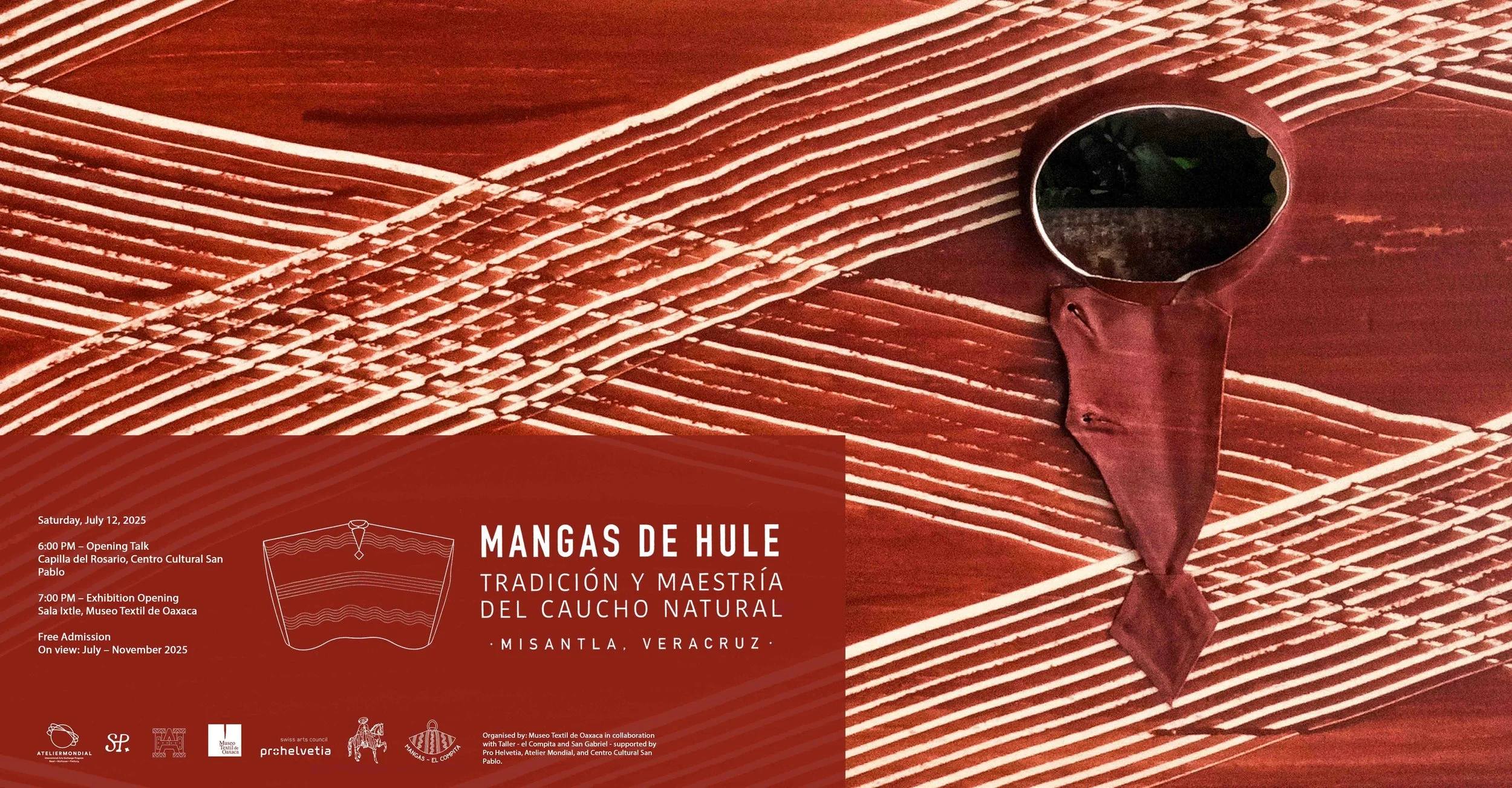
Ésta es una exposición sobre el tiempo, la técnica, el ritmo y el alma
Con 80 años de experiencia y la visión de una nueva generación, Agustín “El Compita” Ortiz y su protegido sucesor, Marco González, nos han abierto las puertas del taller Mangas El Compita. Nos adentraremos en el arte de recubrir manualmente tejidos con hule natural puro y conoceremos la legendaria manga de hule, prenda histórica que, generación tras generación, ha protegido a la comunidad de la lluvia y la humedad.
Exhibition Information
Opening Talk: Saturday, July 12, 2025 – 6:00 PM
Capilla del Rosario, Centro Cultural San Pablo
Exhibition Opening: Saturday, July 12, 2025 – 7:00 PM
Museo Textil de Oaxaca, Sala Ixtle
On View: July – November 2025
Free Admission
Venue: Museo Textil de Oaxaca, Oaxaca de Juárez, Mexico
Artists & Collaborators: Taller Mangas San Gabriel (Teziutlán, Puebla), Taller Mangas El Compita (Misantla, Veracruz), HeveaHub and LATX Biomaterials
Organised by: Museo Textil de Oaxaca
Supported by: Pro Helvetia Design and Pro Helvetia Southamerica, Atelier Mondial, Centro Cultural San Pablo and Fundation HarpResearch: Alex Amir Khan
Curation & Texts: Alex Amir Khan, Hector Meneses
Photography, Video, and Voice: Saabianni Labastida
Audio: Rafa Maciel, Alex Amir Khan
Graphic Design: Frida Nuricumbo




Nos adentraremos en el arte de recubrir manualmente tejidos con hule natural
Ésta es una exposición sobre el tiempo, la técnica, el ritmo y el alma: observemos la maestría artesanal y escuchemos los retratos audiovisuales y los testimonios que laten al compás de esta tradición. Conozcamos el día a día del taller y su ciclo material: del textil y el látex fluido surge una combinación única cuyas raíces están ancladas en México desde hace miles de años. Atestiguaremos la forma en que este legado ancestral sigue presente en la vida cotidiana y se reinterpreta en clave contemporánea.

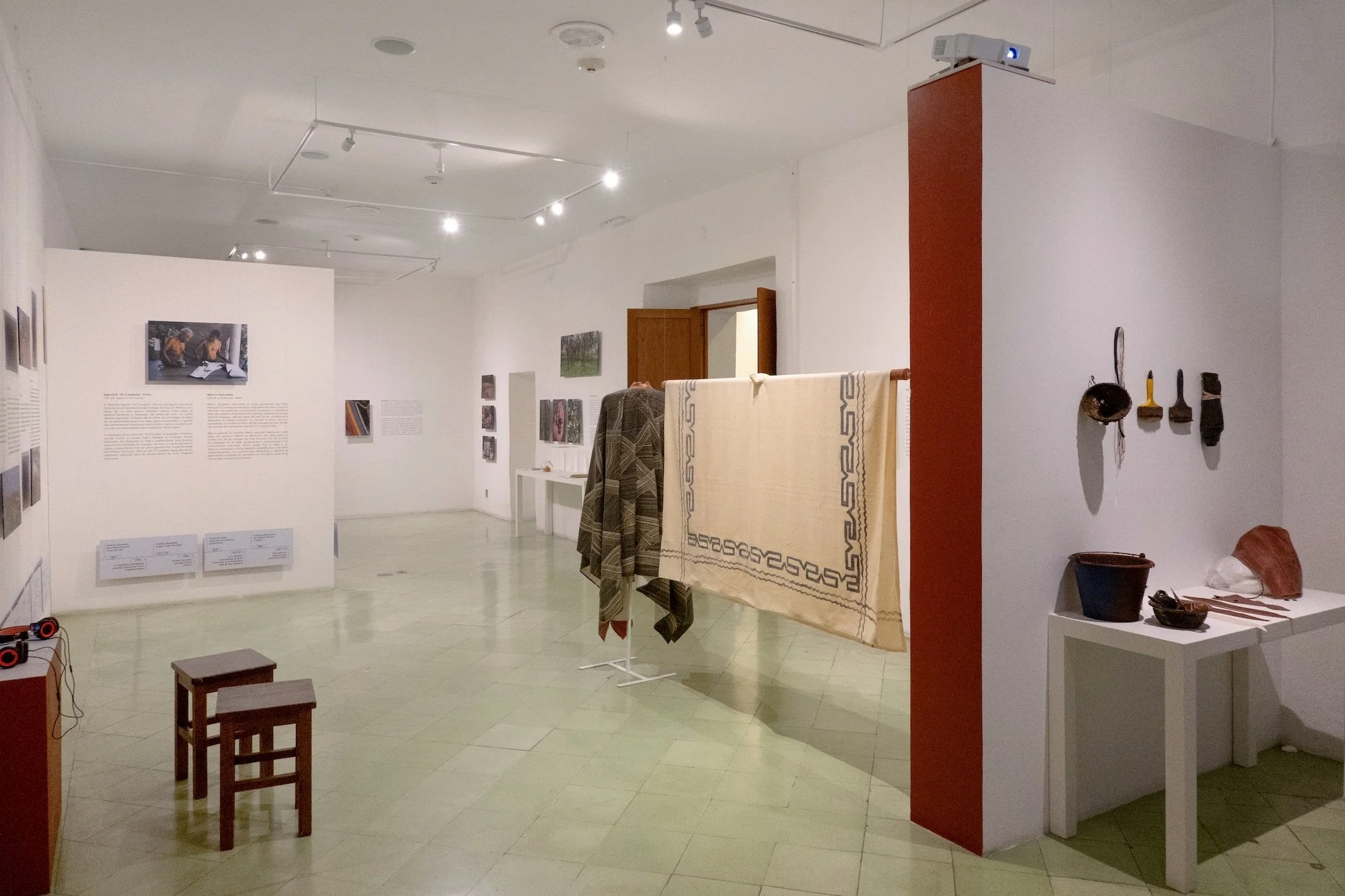
A Parallel Setting: Teziutlán, Puebla
In Teziutlán, Alexander Amir Khan met masters Javier and Neto Luciano from the workshop Mangas San Gabriel. Together they carried out a special project: the reproduction of two historic mangas de hule, one of which is displayed here. This collaboration made it possible to revive a unique artisanal tradition. The hand-painted decoration — intricate and today rarely seen — is especially inspiring.

Del textil y el látex fluido surge una combinación única
Esta muestra es un llamado a conservar y transmitir este invaluable patrimonio cultural. Demos paso a la inspiración y seamos partícipes de la construcción del futuro de este oficio/ esta práctica excepcional.

A collaborative design-research project developing natural latex–based textiles that combine traditional craftsmanship with contemporary material innovation for sustainable, circular applications.
An intercultural platform linking Mexico and Brazil through research, design, and artistic collaboration around natural latex, fostering sustainable knowledge exchange and creative innovation.
Acknowledgment
This exhibition was made possible through the generosity, dedication, and shared commitment of many individuals and institutions.
My deepest gratitude goes to Héctor Meneses and the team of the Museo Textil de Oaxaca, Centro Cultural San Pablo, whose trust and vision gave this project its form and direction. My thanks also go to the Fundación Harp, whose continued commitment to cultural heritage and education has been essential in supporting this exhibition and its wider context.
I would also like to thank Atelier Mondial, whose 2022–2023 residency in Oaxaca marked the initial spark that set this research in motion and opened the path for new collaborations between Mexico, Brazil, and Switzerland.
Special recognition goes to Pro Helvetia Design and Pro Helvetia South America, whose initiative LATX Biomaterials and HeveaHub has been instrumental in fostering dialogue, research, and creative exchange around natural latex and sustainable design practices.
I am deeply grateful to Noé and his Blog Arca de Noé, whose dedication to documenting and preserving the material and immaterial heritage of Misantla created the first link between Mangas El Compita and my research.
Heartfelt thanks to the artisans and collaborators of Taller Mangas El Compita (Misantla, Veracruz) and Taller Mangas San Gabriel (Teziutlán, Puebla), whose mastery, patience, and generosity made this project possible.
Further appreciation goes to Saabianni Labastida, whose photography, video and voice shaped the visual identity of this exhibition, and to Rafa Maciel, for his sound work and thoughtful editing.
Finally, I wish to thank my family, friends and colleagues in Oaxaca, whose support and kindness have made this collaboration not only possible but deeply meaningful. It is an honour to contribute, together, to bringing a part of Mexico’s material and immaterial heritage back into the light.
